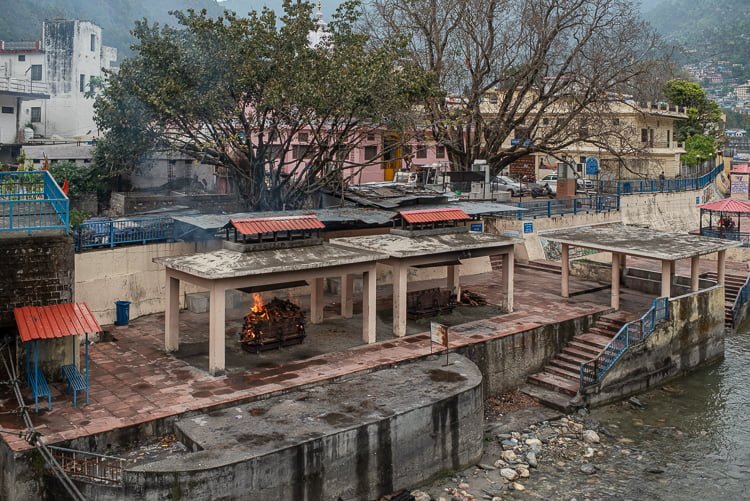It is not long before, whilst walking along the banks of the river Ganges in India, one is confronted by the spectacle of flames emanating from a large fire beside the flowing river. Upon looking more closely, one sees that the flames consume a wooden pyre and, somewhere in the centre of the pyre, consume a human body. One becomes aware, maybe instinctively, of a graphical conversion of matter into spirit.
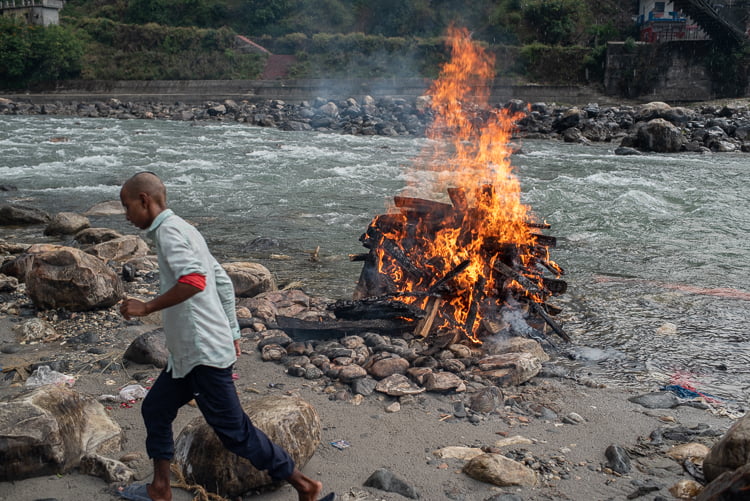
One of the most challenging sensory experiences of visiting India is watching the antyesti ( burial ) rites of cremations. Funeral pyres, and recently specifically designated eco-centric cremation ghats, can be found along the length of the river Ganges. To be cremated along the banks of the Ganges is regarded as being particularly auspicious and contributes enormously to the desired achievement of moksha, the freedom from the recurring cycle of life and death. Hindus come from all over India to die and be cremated on the banks of the river Ganges.
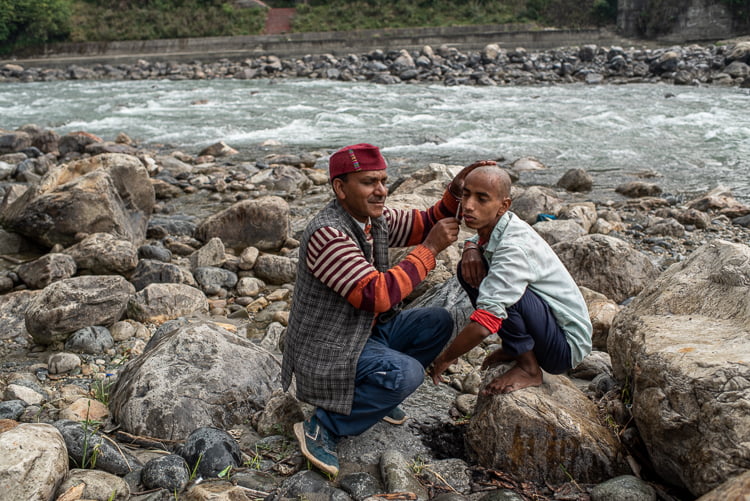
Cremation occurs in Uttarkashi at Kedar Ghat beside the Kedar suspension bridge close to both the Nikitan Ashram and the Kali Temple. An ancient Peepal tree and a ruined Shiva temple stands just outside of the ghat. Cremation can occur either in specially created receptacles complete with filtration chimneys on the northern side of the Bhagirathi, or can occur actually riverside beside the Ganga, on either the northern or southern shoreline where there are no filtration devices. In common with the cremation ghat in Varanasi ( the true Kashi ) Kedar Ghat is also known as Manikarnika Ghat.
The role of the deity Agni, the Hindu god of fire, is pivotal in this transformative process. More about Agni can be found here. It is his role to facilitate the ascension of the soul from its bodily shell to its liberated state.
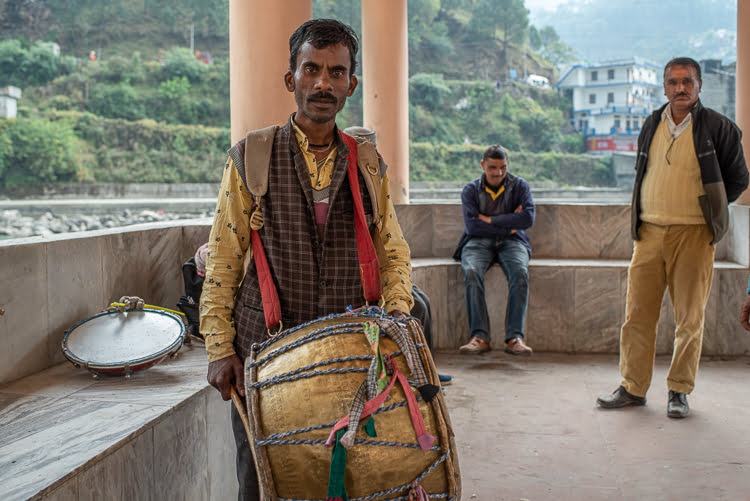
The Hindu antyesti rites and cremation complexes have complicated traditions and rituals. My previous photographs of cremation at Manikarnika Ghat at Varanasi attempt to show the entire sacred ghat landscape and the rituals. It is a landscape where ‘shops’ provide all the services and materials necessary for the successful completion of hundreds of cremations every day. These materials include various types of wood, ghee, accelerants, and barbers to cut the hair of family members. It is common for only men to attend the cremations. Rituals include the important role of the Karta ( the white clad nearest male relative of the deceased who has a specific ceremonial role ) who, in Varanasi conveys, the ‘eternal flame’ to light the pyre and begin the cremation. His role continues throughout the ceremony and extends for several weeks beyond.
There is no similar range of shops or stalls on the river banks at Uttarkashi and family members have to bring their own supplies, musicians and barbers.
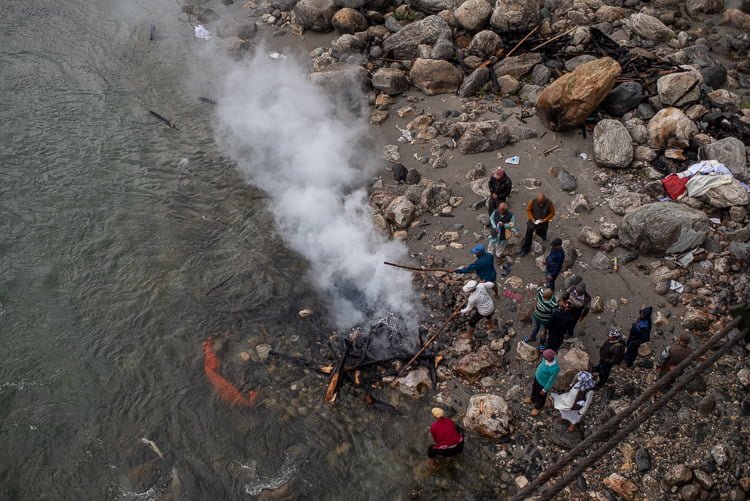
A ‘greener’ and cleaner Ganga has become a political requirement, and the development of eco-friendly cremation sites has been an important part of that ambition. There are still problems and recent accounts of dogs devouring semi-cremated bodies has caused consternation.
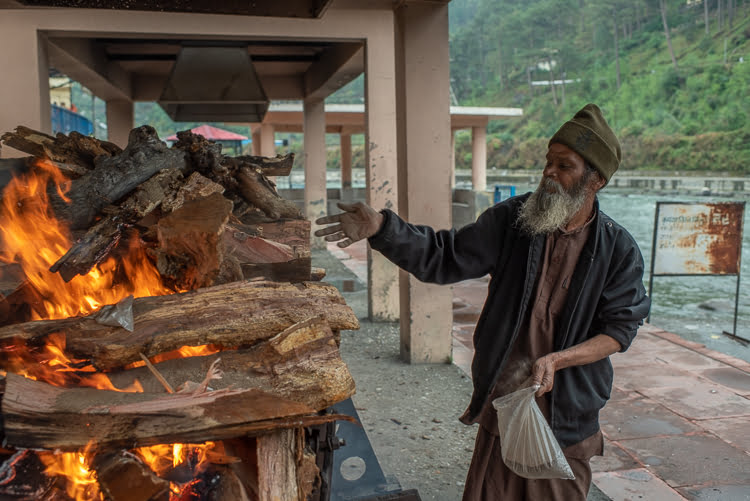
The photographs shown here are of 3 cremations, two on the river bank including families and the associated hair cutting rites, and one cremation where the new eco-friendly receptacle was used, no family attended and the role of the Karta ( setting fire to the cremation ) was undertaken by a non-family member.
A gallery of images depicting antyesti from Uttarkashi can be found here, previous images from Manikarnika in Varanasi can be found here, and a book I have compiled depicting antyesti at Manikarnika Ghat in Varanasi can be found here.
